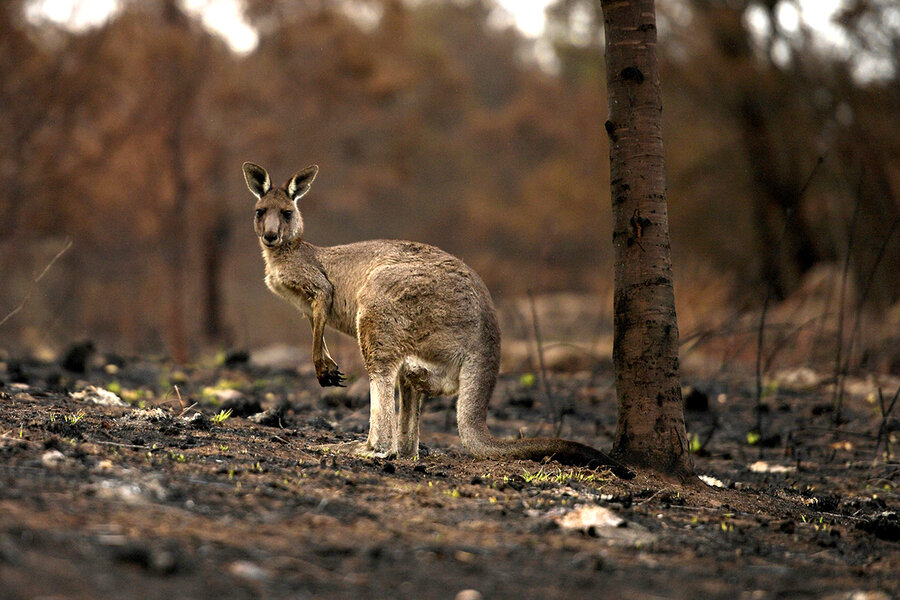800 million animals, 26 million acres. Australia’s tragedy in numbers.
The scale is almost too big to fathom.
More than 26 million acres of Australia have burned since the wildfire season began. That’s more than 10 times the size of the 2018 California fires. The human cost has been severe, with at least 27 lives lost and some 2,000 houses destroyed.
But experts say the level of ecological destruction underway is unprecedented. Grasslands and eucalyptus forests have burned, which is not uncommon, but so have some alpine areas and rainforests. And such huge tracts of habitat disappearing have many concerned for the rich wildlife in Australia, which has a high portion of animals found nowhere else in the world and already has the highest rate of extinction for any region.
Chris Dickman, an ecologist at the University of Sydney, estimates that more than 800 million mammals, reptiles, and birds have been killed directly or indirectly in New South Wales. The World Wide Fund for Nature estimates that up to 1.25 billion animals have been lost overall on the continent, including up to 30% of all koalas.
“The fires have been devastating for Australia’s wildlife and wild places, as massive areas of native bushland, forests and parks have been scorched,” says Stuart Blanch of WWF-Australia, in written comments. He’s concerned about the impact of habitat loss on already endangered species like the Kangaroo Island dunnart, the long-footed potoroo, and the regent honeyeater. “Some species may have tipped over the brink of extinction,” Dr. Blanch adds. “Until the fires subside, the full extent of damage will remain unknown.”

NASA Earth Data - MODIS, The Guardian via Rural Fire service, CalFire, Australian Bureau of Statistics
Why We Wrote This
The scope of any disaster can be difficult to grasp from afar. But the numbers coming out of Australia are particularly jarring. Our graphics team helps to bring them into focus.






